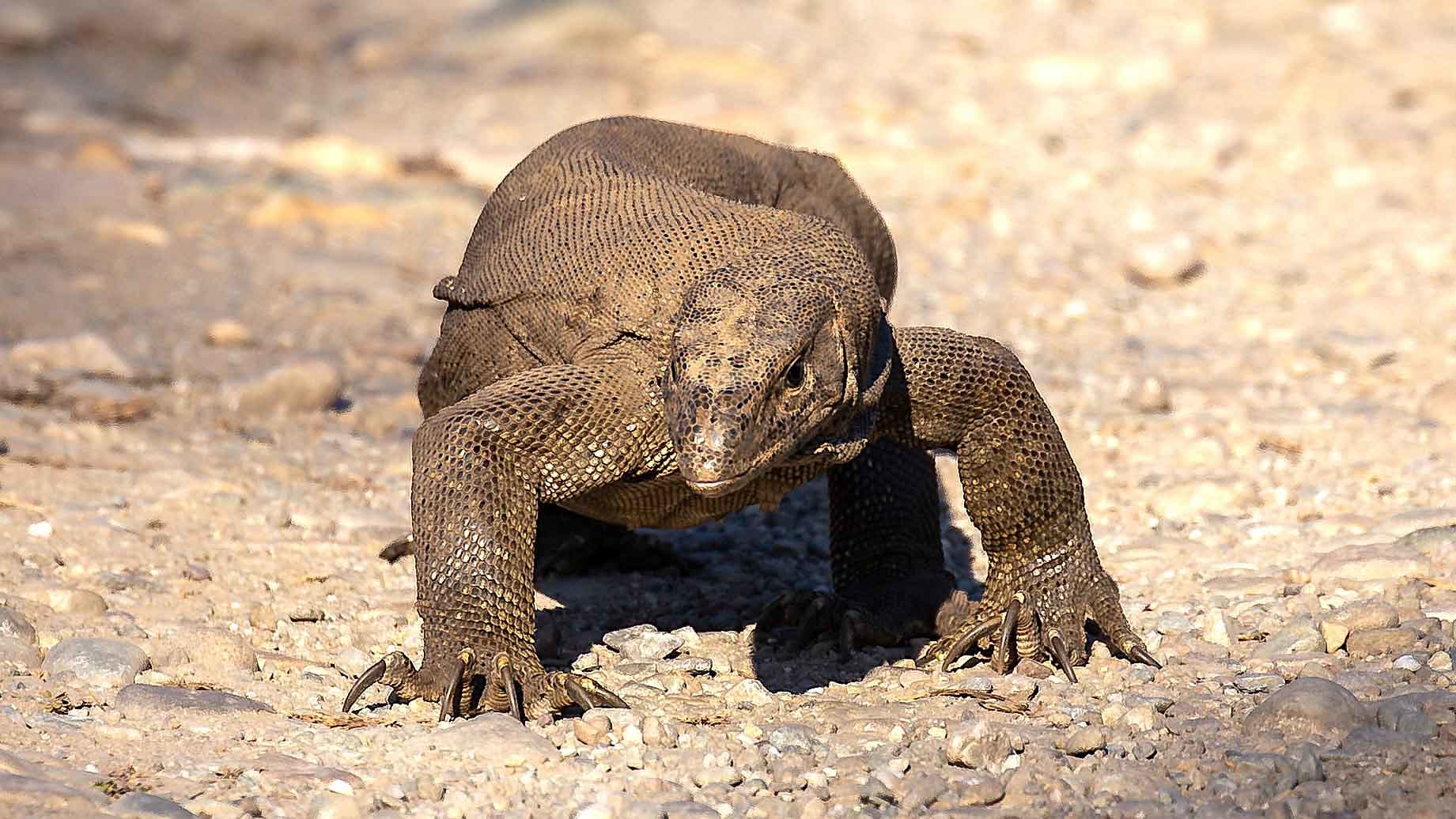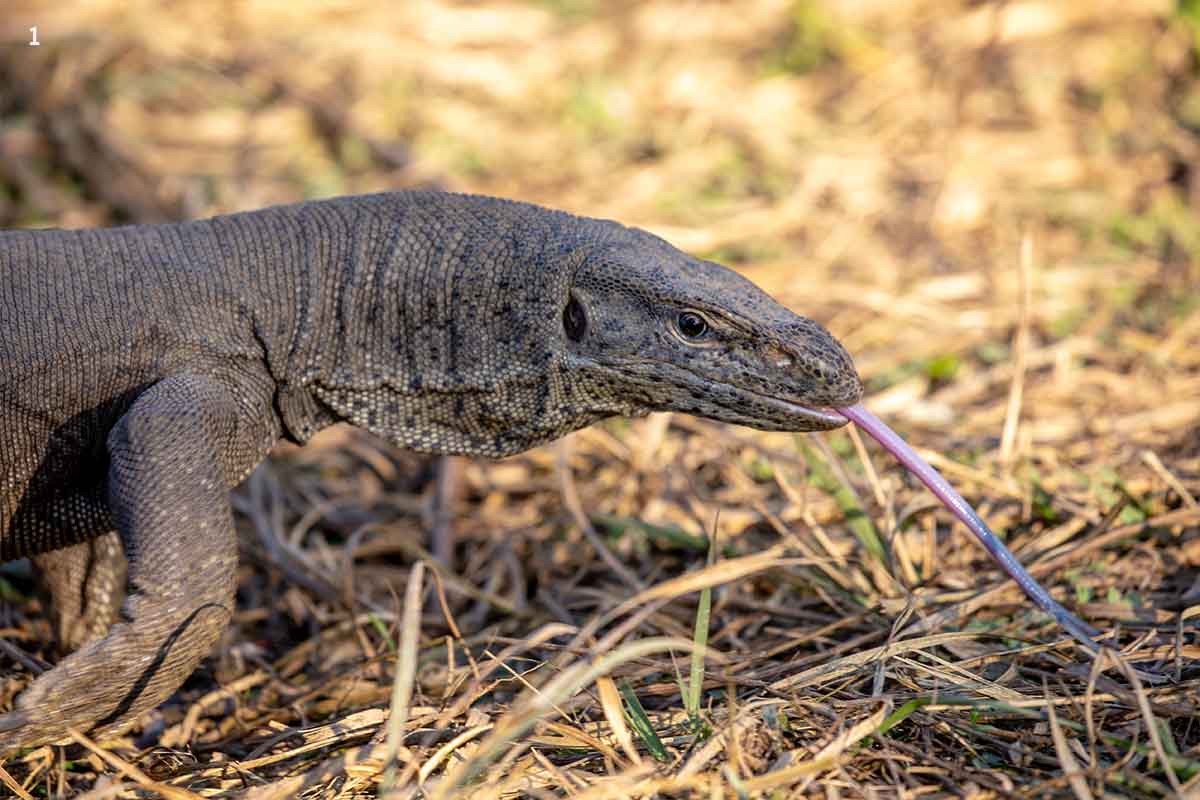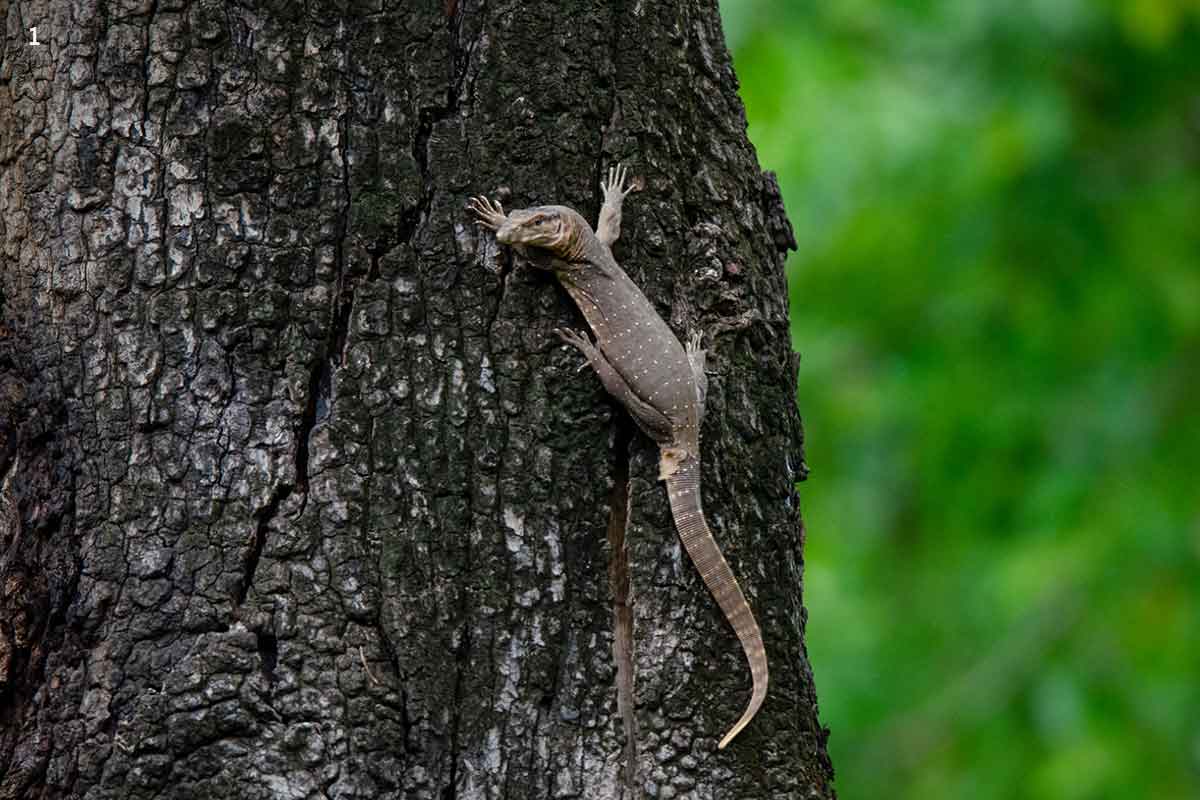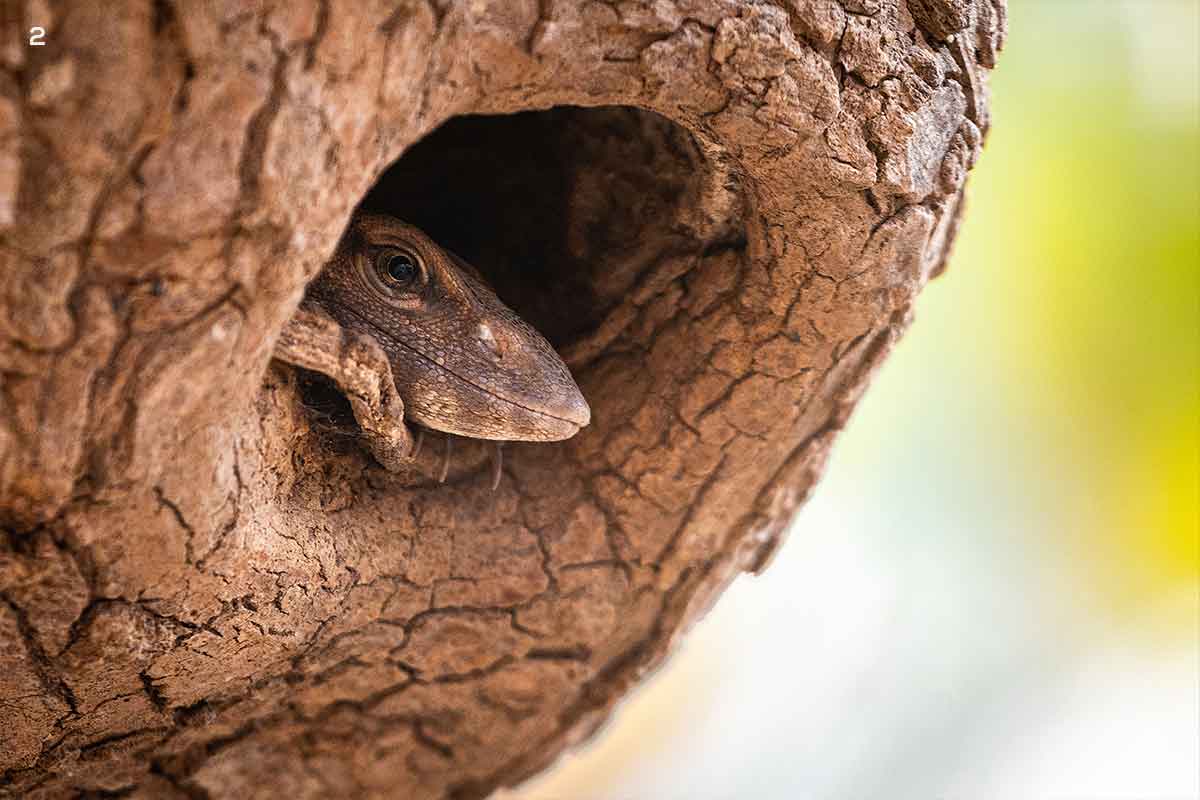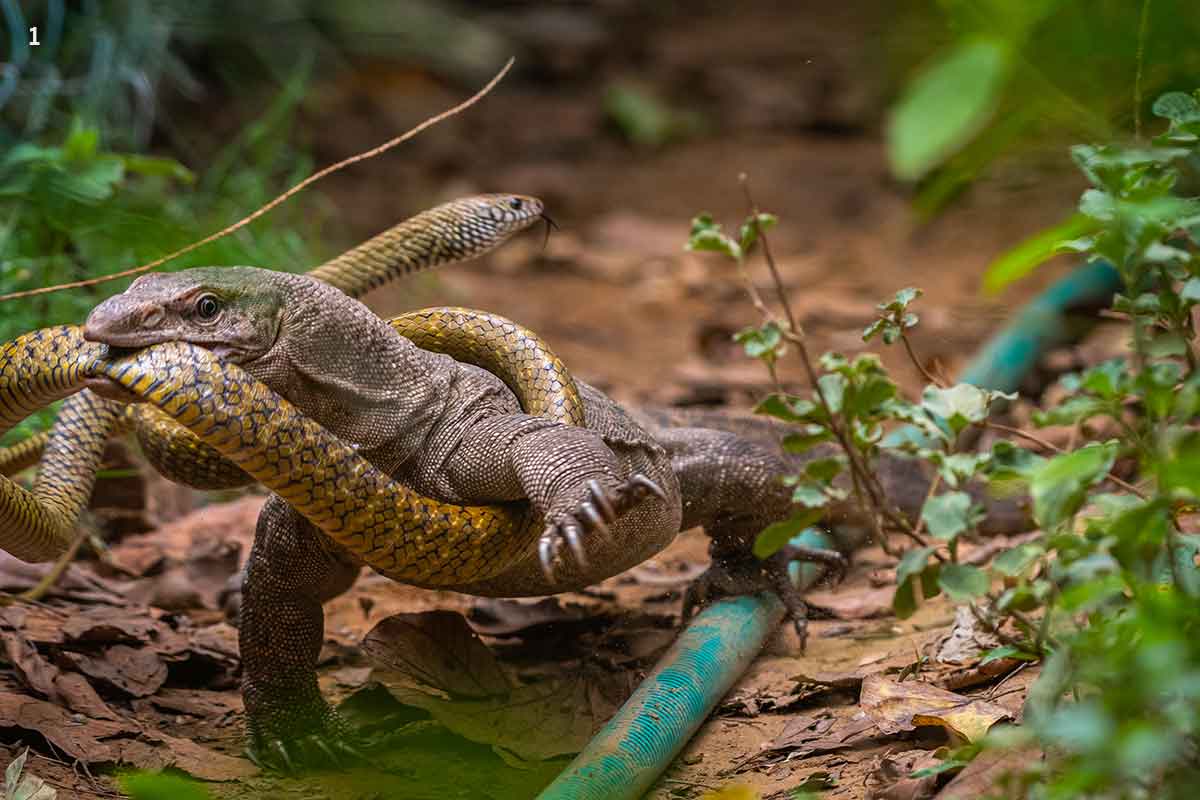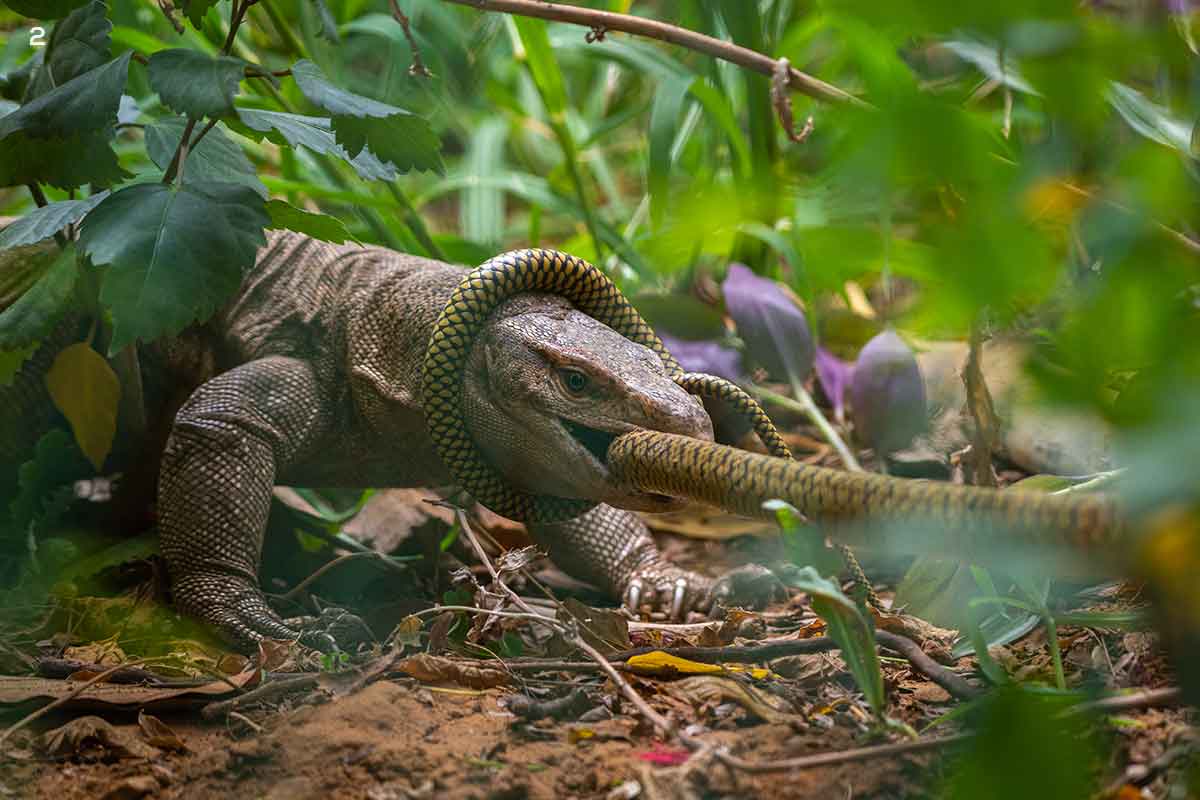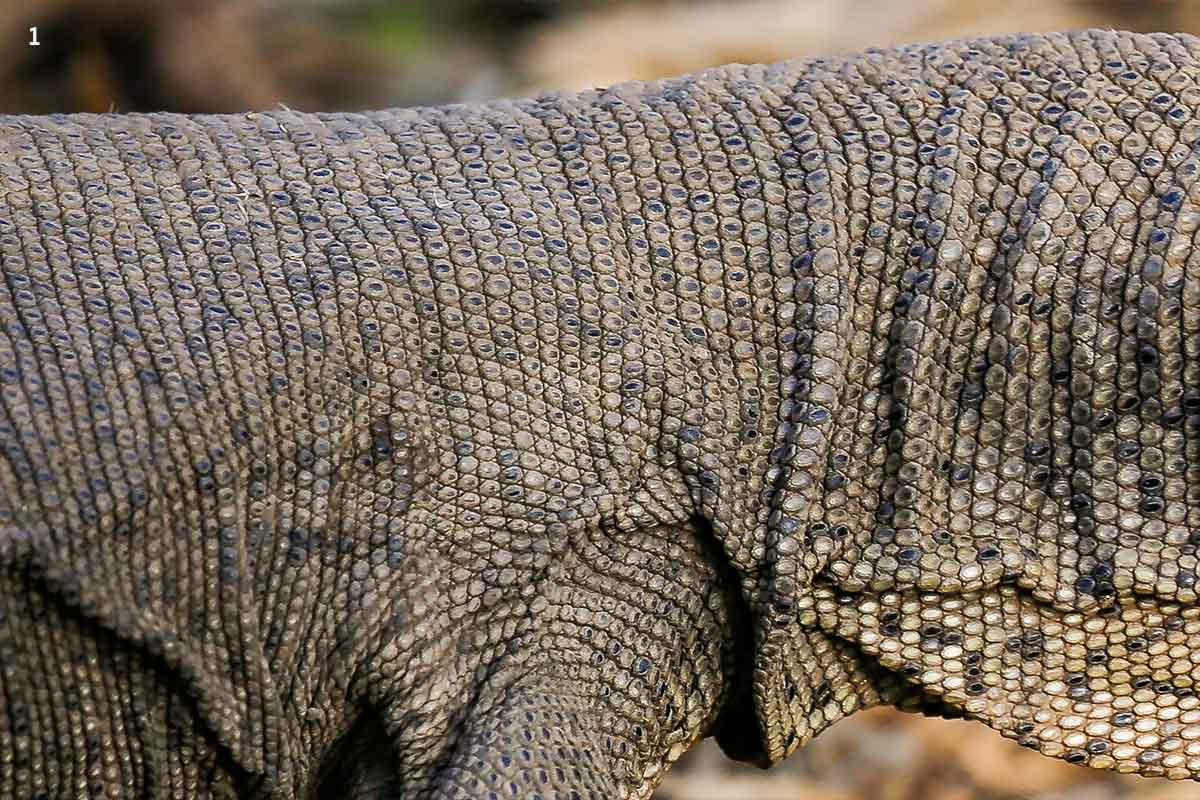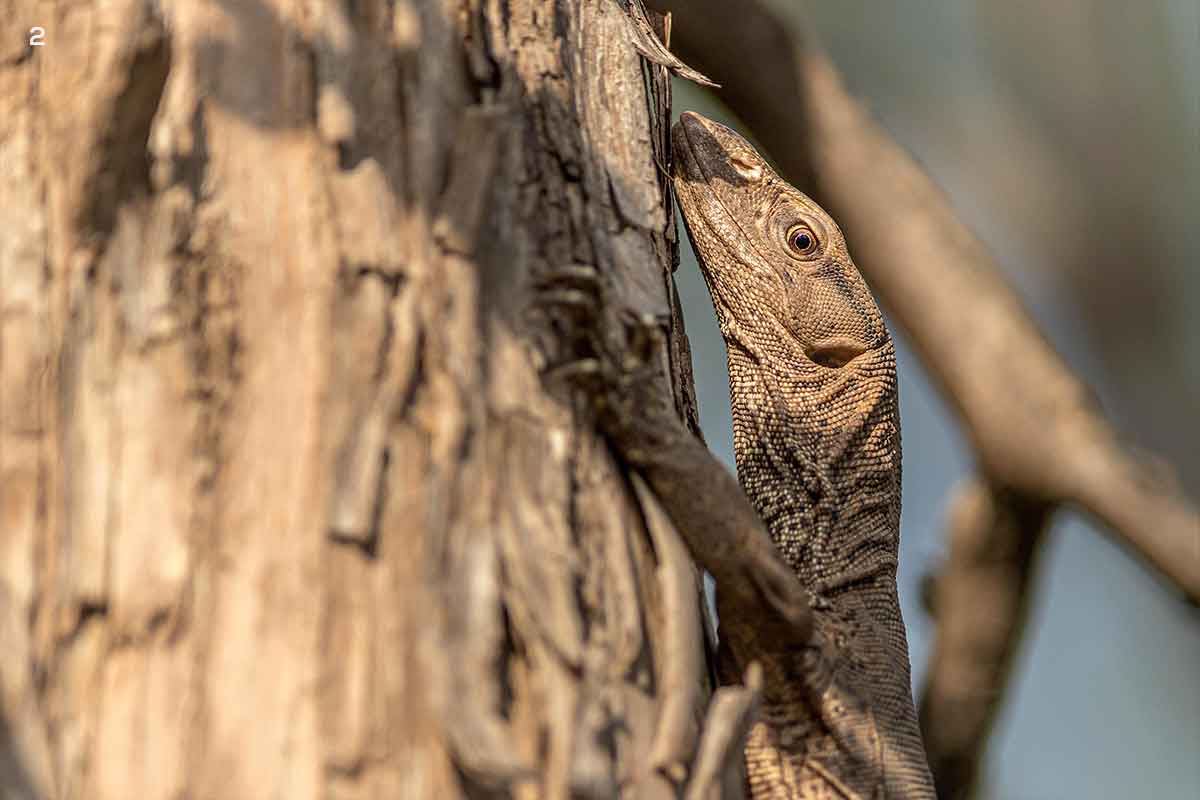 Listen to this article
•
15:34 min
Listen to this article
•
15:34 min
A monitor lizard outside an urban home in one of India’s major cities? It may sound incongruous, but it is not that unusual. In July 2020, a monitor lizard was spotted outside a Delhi home, and its photo on the concrete ground caused a mini Twitter stir. Across India, monitor lizards are a common sight in urban spaces, they reside in gardens, sewers, and even people’s backyards.
The Bengal monitor (Varanus bengalensis) is one of the most widely distributed lizards (varanids), with a geographical range across Southern Asia, from southeast Iraq to Java. It is one of four species found in India. Also known as the common Indian monitor, it occurs across the country and has a wide range of local names — goh, bilgoh, goyra, goshaap, gui xaap, vish khopda, ghorpad, udumbu, and uda — in different languages
Bengal monitors inhabit various habitats with warm temperatures. The landscapes they live in include arid deserts, shrublands, moist rainforests, forest edges, plantations, agricultural land, and urban spaces. The physiology of this family of lizards enables them to survive and thrive in varied habitats and conditions.
Of sturdy build and assertive demeanour, they possess well-developed strong legs, a long neck and tail, and a forked tongue. Belonging to the ancient family Varanidae and genus Varanus, these powerful, agile reptiles have been around for over 90 million years.
These impressive reptiles have a knack for tracking and actively pursuing prey. They are dynamic predators, inhabiting large territories and engaging in high levels of activity to sustain themselves. Along with their commendable anatomy, monitor lizards are also known for their intelligence.

Monitor lizards are vigilant, quick-moving diurnal creatures engaged in activity and movement throughout the day to feed and survive. With their strong legs, these lizards can move rapidly on the ground and cover long distances while running.
They can stand on their hind legs to scan their surroundings, sometimes taking this stance when faced with competition from another monitor for food or mate. During a face-off, they tend to puff themselves up to appear bigger, and will attack with their whipping tail. Weighing approximately 7 kg and growing up to 1.7 metres in length, they can be menacing opponents. Photo: Akshay Manwani

Bengal monitors possess strong claws used for multiple purposes — digging, climbing, and tearing flesh. Their curved claws and strong bite make them successful and ferocious predators. These lizards usually shelter in burrows that they dig, for which their strong legs and claws are ideal. They are also agile climbers, as their claws provide a secure grip.
During the breeding season, Bengal monitors may use abandoned termite mounds or dig burrows to obtain suitable temperatures and humidity for their eggs. Digging is also one of the most common ways of obtaining food, and their claws are handy while foraging and hunting. Photos: Akshay Manwani (1), Saurabh Sawant (2)


Known for its strength and resilience, the Bengal monitor is helpless in the face of habitat destruction and poaching. In India, the population of Bengal monitors is declining as human settlements expand, and development occurs at exponential rates. Moreover, they are hunted for their skin, meat, and even in the name of traditional medicine.
Bengal monitors are highly adaptable lizards that can thrive in urban spaces if we let them. In Sri Lanka and Malaysia, these lizards roam freely, even in the middle of cities. In India, this is only the case in a few places. In most parts of the country, the Bengal monitor is misunderstood and either wrongly believed to be dangerous or hunted and killed for trade. Photo: Saurabh Sawant



